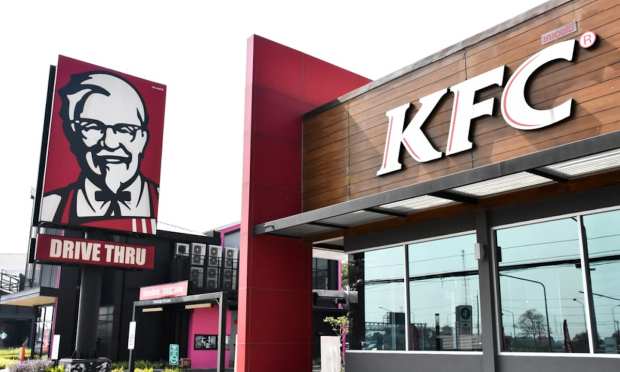Restaurants Weigh Margin-Boosting Benefits of Digital-Only Locations

As restaurant brands around the world look to boost margins, many are turning to kiosks to dramatically reduce their labor needs.
Quick-service restaurant (QSR) giant KFC, for one, has been rolling out self-service-only kiosk-powered restaurants in India, as Indian English-language business newspaper The Financial Express reported earlier this week.
These so-called “Smart Restaurants,” which also accept mobile orders from customers’ smartphones, are currently in four cities in the country. KFC has plans to open 10 more such locations before the year’s end.
“According to reports, digital users in India have more than doubled over the last five years, and millennials are now spending around eight hours per day online,” Moksh Chopra, general manager, KFC India, said in a statement. “Strengthening our commitment to being easily accessible to our consumers, we have been on a deliberate journey from CX to DX — enhancing customer experience through digital means.”
The move marks the implementation of a strategy that Yum Brands discussed in August, at the time of its second-quarter earnings report. CEO David Gibbs noted that implementing kiosks at international KFC stores contributed to sales growth in the Latin America market, and CFO Chris Turner explained that doubling kiosk penetration in stores throughout Africa has helped the company “improve customer experience and drive greater insights into customer behavior.” Now, apparently, the company is setting its kiosk sights on Asia.
Meanwhile, in the United States, Yum Brands’ Taco Bell tried a similar strategy with its kiosk-powered, digital-only restaurant in Times Square. These locations bet on consumers’ demand for speed and convenience outweighing their expectations of service.
While these brands are turning to kiosks to boost sales with dramatically lower labor costs, others are turning to alternative, similarly digital restaurant models. Take, for instance, the wave of next-gen vending machines emerging. Chicago-based Asian-style restaurant brand Wow Bao announced in July a partnership with Automated Retail Technologies, making the former’s foods available through the latter’s Just Baked Hot Food vending machines.
“I believe that vending machines are going to start growing in a way that we have not seen for decades,” Wow Bao CEO Geoff Alexander told PYMNTS in an interview at the time. “It seems like the vending machine world is becoming more understood and readily convenient for people to shop at as opposed to, ‘I’m just going to go and get a soda and a candy bar.’”
Then there are the brands trying to bring back the automat format, such as Brooklyn Dumpling Shop, a quickly expanding automat-style dumpling-focused QSR.
“[Consumers] want two things: They want to be in control, and they want to be in and out fast,” Stratis Morfogen, Brooklyn Dumpling Shop’s founder and owner, told PYMNTS in an interview last year.
He added that the automat model allows the consumer to determine “when they want to order, when they want to pick up, and how quickly they want to be in and out.”
Kiosks, for their part, can be a helpful way for QSRs to boost efficiency, though not all eateries would benefit from the technology.
Findings from the May/June edition of PYMNTS’ Digital Divide study, The Digital Divide: Technology, The Metaverse And The Future Of Dining Out, created in collaboration with Paytronix, which drew from a survey of about 2,500 U.S. consumers, reveal that 51% of grab-and-go customers say ordering through a self-service kiosk would positively impact their satisfaction, while only 20% of dine-in customers say the same.
Indeed, across the restaurant industry, adoption of the technology is actually on the decline, according to data from the 2022 edition of the Restaurant Readiness Index, created in collaboration with Paytronix. The study, which drew from a survey of more than 500 managers of full-service restaurants (FSRs) and QSRs across the country, found that 18% of restaurants offered self-service kiosks inside the store as of April, down significantly from 23% in September 2021.
Still, many large chains maintain that the technology will be key to their future success.
“The customer has certainly voted that the experience of ordering on a kiosk versus ordering face-to-face with a person is actually preferred,” Steph So, head of digital experience at Shake Shack, told PYMNTS in an interview earlier this year.
